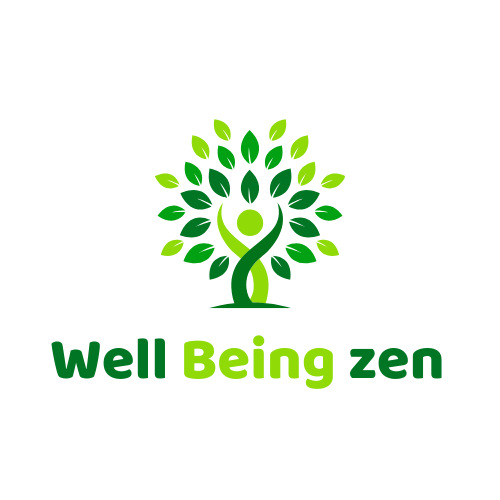Understanding the benefits of taking a power nap and the right time for it can be a complete game-changer for your productivity, mood, and overall well-being. If you’re reading this in the wee hours in Pune, you already know what it feels like to be tired and longing for more energy. But what if you had a secret weapon to strategically combat that inevitable afternoon slump tomorrow, a tool used by high-performers and creative geniuses around the world?
In our fast-paced, modern work culture, we’re often taught to push through fatigue with another cup of coffee. We see resting during the day as a sign of laziness. But this is a profound misunderstanding of our own biology. Ancient traditions, like the Indian concept of vaamkukshi (a short, left-sided rest after lunch), knew what modern science has now proven: a short, strategic nap is not a retreat, but a powerful reboot.
Let’s dismantle the stigma and explore the art and science of the power nap.
Table of Contents
Why You Feel Sleepy in the Afternoon (It’s Not Just Your Lunch!)
Have you ever noticed that around 2 or 3 PM, your energy levels plummet, your focus blurs, and your eyelids feel heavy? This isn’t necessarily a sign that you ate too much at lunch or that you’re not getting enough sleep at night (though those can be factors). It’s a natural part of our human biology.
Our bodies operate on a circadian rhythm, an internal 24-hour clock. This rhythm has a natural dip in alertness in the early afternoon, about 7-9 hours after you wake up. A power nap is an intelligent way of working with this rhythm, not fighting against it.
The Remarkable Benefits of Taking a Power Nap
This short, intentional rest is far more than just a momentary break. It’s an investment that pays huge dividends for the rest of your day.
- Restores Alertness and Reduces Mistakes: This is the most immediate benefit. A short nap can significantly improve alertness, sharpen focus, and enhance performance on tasks that require logical reasoning and quick reaction times.1
- Improves Memory and Learning: Sleep plays a critical role in memory consolidation, the process of moving information from short-term to long-term memory. Even a brief nap can help you better retain information you’ve learned earlier in the day.
- Enhances Creativity and Problem-Solving: When you’re stuck on a problem, a nap can be the best solution. Resting your conscious mind allows your subconscious to make new connections, often leading to “aha!” moments and creative breakthroughs upon waking.
- Boosts Your Mood: A quick reboot can work wonders for your emotional state.2 It can reduce feelings of frustration, impulsivity, and irritability, leaving you feeling more patient and positive.
- Reduces Stress: Napping is a powerful stress-reliever.3 It can help to lower levels of stress hormones like cortisol and norepinephrine, promoting a sense of calm and relaxation that can carry you through the rest of the day.4
The Art of the Perfect Nap: The Right Time and Method
To unlock the full potential of a power nap, you need to understand the two key variables: how long to nap, and when to do it. This is where we explore the benefits of taking a power nap and the right time for it in detail.
The Golden Rule of Timing (How Long?)
The length of your nap determines the benefits you receive and how you feel when you wake up.
- The 20-30 Minute “Power Nap”: This is the sweet spot. This length allows you to get the benefits of light-stage sleep, which boosts alertness and concentration, without entering the deeper stages of sleep.5 This means you can wake up feeling refreshed and ready to go, without the grogginess known as “sleep inertia.”6
- The 90-Minute “Full-Cycle” Nap: If you have more time and are feeling particularly sleep-deprived, a 90-minute nap can be incredibly restorative. This allows your body to go through one full sleep cycle, including the deep, slow-wave sleep and REM (dream) sleep. You will wake up feeling a significant improvement in memory and creativity. Avoid napping for 60 minutes, as this often wakes you up in the middle of deep sleep, which causes maximum grogginess.
The Best Time of Day (When?)
The timing of your nap is crucial to ensure it doesn’t interfere with your nighttime sleep.7
- The ideal window for a nap is generally in the early to mid-afternoon, between 1 PM and 3 PM.8 This aligns perfectly with the natural dip in your circadian rhythm and is early enough in the day that it shouldn’t affect your ability to fall asleep at night. Napping too late in the afternoon (after 4 PM) can make it difficult to fall asleep at your regular bedtime.9
How to Power Nap Effectively
- Set an Alarm: This is non-negotiable.10 Setting an alarm for your desired duration (e.g., 25 minutes to allow for a few minutes to drift off) removes the anxiety of oversleeping and allows your mind to fully relax.11
- Find a Quiet, Dark Space: Minimize light and noise as much as possible.12 An eye mask and earplugs can be incredibly helpful.
- Try the “Caffeine Nap”: This is a famous productivity hack.13 Quickly drink a cup of coffee or tea right before you lie down for your 20-minute nap. The caffeine takes about 20-30 minutes to kick in, so you’ll wake up just as its alerting effects start, combating any lingering grogginess.14
- Don’t Stress About Sleep: Even if you don’t fully fall asleep, the act of simply lying down with your eyes closed in a quiet space is restorative in itself. It’s the rest that counts.
Conclusion: Embrace the Reboot
It’s time to rewrite the narrative. A power nap is not a sign of weakness or laziness; it is a sign of intelligence. It is a strategic tool used by smart, productive people to manage their energy, enhance their brain function, and stay at the top of their game.
So the next time you feel that afternoon slump calling, don’t just push through it. Listen to your body. Give yourself the gift of a 20-minute reboot. You will be amazed at how much brighter, sharper, and calmer the rest of your day can feel.
Have you ever tried a power nap? Share your tips for the perfect reboot in the comments below!




